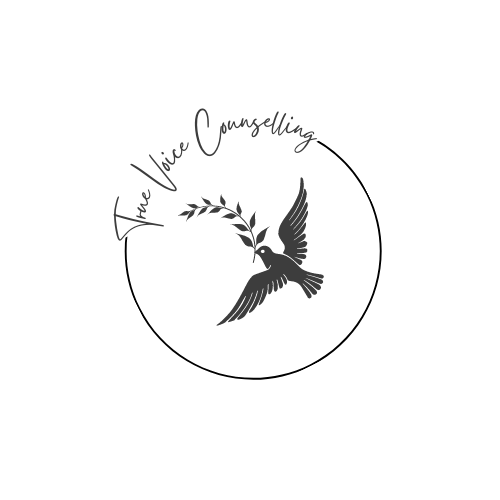“But I Had a Happy Childhood”: Why Therapists Go Back to the Past
Many people arrive in therapy with a version of this sentence:
“I had a good childhood, so I don’t think this has anything to do with my past.”
It’s often said with conviction — sometimes even with guilt. Just as often, it’s followed by:
“Other people had it so much worse.”
But as Dr. Gabor Maté — a renowned physician, speaker, and author known for his work on trauma, addiction, and mind-body health — reminds us, trauma isn’t just what happens to you. It’s also what happens inside you as a result of what happened (or didn’t happen).
Why Do Therapists Talk About Childhood?
1. The Past Lives in the Present
According to attachment theory (Bowlby, Ainsworth), the patterns of safety, connection, and attunement we experienced — or didn’t experience — in childhood often shape how we relate to others and ourselves as adults.
Even if the past feels “over,” its imprint can remain in our nervous system, expectations, and relationships.
“We don’t remember what happened to us as children — we remember how it felt.”
— Dr. Gabor Maté
Neuroscience supports this understanding. The brain develops in relationship. Early experiences shape neural pathways, stress responses, and even immune function (Siegel, 2012; Schore, 2001). When childhood needs aren’t met — whether through neglect, emotional misattunement, or chronic stress — we adapt. Those adaptations may help us survive but can lead to struggles later on.
2. Rethinking the “Happy Childhood” Narrative
Dr. Maté often encourages clients who describe an ideal childhood — not to challenge their story, but to explore what they might have needed to believe in order to feel safe and connected. As children, many of us prioritise maintaining relationships over fully acknowledging painful truths — because connection is vital for survival.
So when someone says they were never angry, never sad, or always “easy,” Maté might gently ask:
“And what did that cost you?”
Did you learn to suppress emotion in order to be “good”?
Did you adapt to meet the needs of those around you?
This is not about blame — it’s about context. Understanding how we adapted can help us reclaim agency in the present.
3. Compassionate Inquiry: Making the Unconscious Conscious
Dr. Maté’s method, Compassionate Inquiry, encourages curiosity over judgment. It invites questions like:
What did you have to suppress to feel safe, loved, or accepted?
Where did you learn that your needs were too much?
When did you start believing you had to earn love — or that rest meant laziness?
Uncovering these messages isn’t about dwelling in the past. It’s about releasing ourselves from its unconscious hold.
While I don’t use Compassionate Inquiry as a formal method, I draw on its spirit in my work — exploring experiences with curiosity and compassion. Together, we gently examine the stories beneath the patterns — not to stay stuck in them, but to understand and loosen their grip, making space for a fuller, more authentic life.
4. The Body Remembers What the Mind Forgets
As Bessel van der Kolk writes in The Body Keeps the Score, trauma lives in the body.
We may not consciously remember being dismissed, ignored, or overwhelmed — but the body often does.
That tightening in your chest before a confrontation.
That compulsion to overachieve in order to feel worthy.
That sinking feeling after setting a boundary.
Childhood isn’t just a chapter in our history — it’s a somatic inheritance.
Final Reflection:
Therapists don’t explore childhood to assign blame or dwell on the past. We do it to help make sense of the patterns that still affect us — so we can meet them with compassion, not criticism.
We go back to honour the child who adapted in the best way they could.
And we do it with care — because healing isn’t about forgetting. It’s about remembering with kindness and reclaiming what may have been lost along the way.
References & Further Reading
Maté, G. (2019). The Wisdom of Trauma [Film & Interviews]. Science and Nonduality (SAND).
Maté, G. (2010). In the Realm of Hungry Ghosts: Close Encounters with Addiction. North Atlantic Books.
Maté, G. (2022). The Myth of Normal: Trauma, Illness, and Healing in a Toxic Culture. Avery.
Van der Kolk, B. (2014). The Body Keeps the Score: Brain, Mind, and Body in the Healing of Trauma. Viking.
Siegel, D. J. (2012). The Developing Mind: How Relationships and the Brain Interact to Shape Who We Are. Guilford Press.
Schore, A. N. (2001). The Effects of Early Relational Trauma on Right Brain Development, Affect Regulation, and Infant Mental Health. Infant Mental Health Journal, 22(1–2), 201–269.
Bowlby, J. (1988). A Secure Base: Parent-Child Attachment and Healthy Human Development. Basic Books.
Ainsworth, M. D. S. (1978). Patterns of Attachment: A Psychological Study of the Strange Situation. Lawrence Erlbaum Associates.
